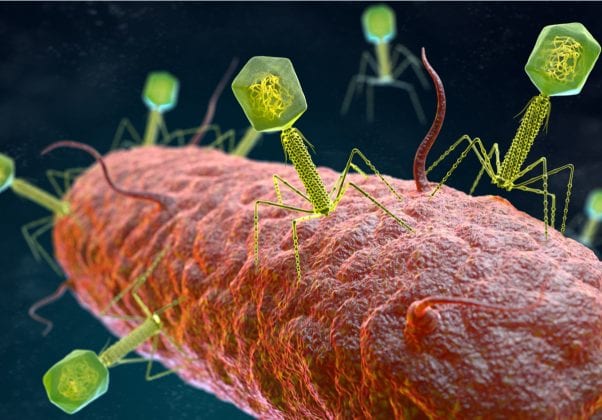UCL London Scientists Developed Artificial Virus To Destroy Bacteria
Scientists created an artificial virus that can burrow through the bacterial walls of superbugs without being spotted by the human immune system.
Antibiotic resistance of bacteria has become a global threat to humanity alongside terrorism and climate change.
The shape of the virus determines its function. Experts used the ‘solid cage’ like the shape of viruses to create a scaffold in which elements present in the human immune system to recognize pathogens are placed.
These artificial viruses inflicted irreparable and rapid damage to bacteria on moths and cells in the laboratory.
This breakthrough discovery could help tackle superbugs. The research is extremely exciting, according to the National Physical Laboratory in London.
Dr. Maxim Ryadnov and his team expect to test the new virus in humans in three years.
Antibiotics are generally used to prevent the spreading of bacteria, and they are divided into six groups, including penicillins and cephalosporins.
General practitioners and hospital staff had been prescribing antibiotics to patients unnecessarily for years, which fuelled once harmless bacteria to become superbugs.
The World Health Organization (WHO) had previously warned that the world is moving towards a ‘post-antibiotic’ era. They warned that harmless infections like chlamydia could become killers.
If antibiotics are given to patients unnecessarily, or they are taken in incorrect doses, eventually bacteria can become drug-resistant.
The threat of antibiotic resistance is as severe as terrorism, said former chief medical officer Dame Sally Davies.
The new discovery of artificial virus to destroy bacteria could replace the antibiotics which keep loosing its effect over bacteria.
By 2050, superbugs will kill 10 million people every year, and the patients will be affected by once harmless bacteria.
Currently, drug-resistant infections like HIV, tuberculosis, and malaria kill around 700,000 people around the world every year.
Only one or two new antibiotics are developed during the past 30 years, and the existing drugs are becoming less effective.
In September, when a report found a ‘serious lack’ of new drugs in the development pipeline, WHO had warned that the antibiotics are running out.
Cancer treatments, hip replacements, and C-sections could become extremely risky without antibiotics.
Researchers say that a normal antibiotic has only one target on a bacterium, hence to become antibiotic-resistant, all that is needed to do by the bacterium is to change one gene. Dr. Ryadnov’s artificial virus could become a new weapon to fight the super bugs.
The normal human cells are neutrally charged while the bacteria are negatively charged. Ryadnov developed the artificial virus to be positively charged so that it can seek out and destroy bacteria.
They also ensured that the artificial virus is invisible to the human immune system so that it did not destroy it inadvertently.
Professor Sonia Contera, of Oxford University, described the new discovery as ‘future of medicine.’ The work demonstrates a wonderful combination of skills: understanding the biology of bacteria and viruses, protein structure and the physics of protein assembly, characterization techniques from physics and biology and computer simulations
‘This work shows clearly the future of medicine, getting inspiration from the strategies produced by evolution to overcome a medical problem and engineering a new version of those strategies at the nanoscale using techniques and expertise across disciplines,’ she said.

